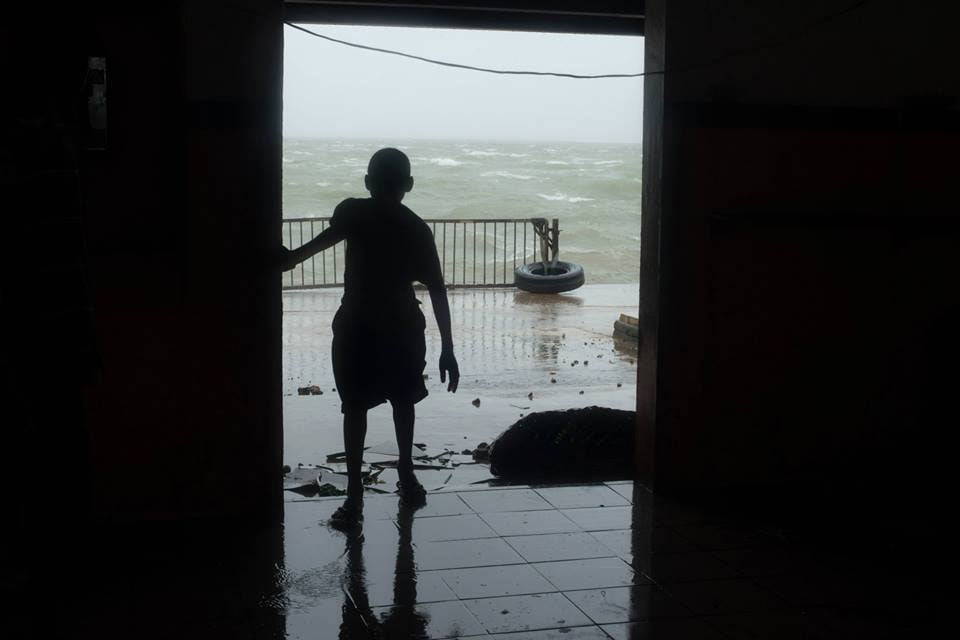Vanuatu is what is known in UN parlance as a “small island developing state.” It has a population of about 270,000 spread across dozens of islands in the South Pacific. It is one of the poorest countries in the region, with most of its population living as subsistence farmers in rural locales.
And this weekend, the Vanuatu may have been the first country to vanish due to climate change.


The powerful, category 5 Cyclone Pam tore through Vanuatu on Saturday and Sunday leaving a long trail of destruction. There is a lot we don’t know about the precise extent of the damage, in part due to Vanuatu’s remoteness and the sheer logistical challenge of delivering aid across dozens of islands. But early signs indicate a crisis that is bordering on existential. Some 90% of all structures in the capital city Port Villa have been destroyed. Aerial photos of remote villages wholly flattened. Communications are down. Roads are washed out. Malaria, diarrhea and cholera may soon take hold. Even the most hardened aid workers are shocked by the scale of the disaster.
“I think for the Pacific, it’s probably going to be the biggest disaster we’ve ever implemented. I don’t think there has ever been destruction on this scale in one place,” the head of the International Federation of the Red Cross for the Pacific region told the BBC.
The country’s president Baldwin Lonsdale, who was in Japan at a big UN Disaster Preparedness Conference when the cyclone hit, said the cyclone ‘wiped out’ all development in his country. As quoted by NPR: “This is a very devastating cyclone in Vanuatu. I term it as a monster, a monster,” he said. “It’s a setback for the government and for the people of Vanuatu. After all the development that has taken place, all this development has been wiped out.” [emphasis added]


This was bound to happen.
A 2011 report on climate vulnerability by the World Bank demonstrated how the geography and poverty of Vanuatu makes it “extremely vulnerable” to climate change. Rising sea levels, heavier rains, and stronger storms that strike with increasing frequency have been wreaking havoc on the region. The report found that the numbers of category 4 and 5 storms in the Pacific region have more than doubled when comparing their frequency and occurrence between 1975-1989 and 1990-2004. The poverty of Vanuatu has undermined the ability of the population to adapt to this new reality by building stronger structures or moving settlements inland and away from more vulnerable flood plains.
Vanuatu is not the only small island state that faces an existential threat from climate change. For several years, scientists, international diplomats and people from small island states themselves have been warning that their countries and ancient cultures were at risk. The poverty and geography of countries like Kiribati, the Solomon Islands, the Maldives, and Papua New Guinea are not dissimilar to that of Vanuatu. But Vanuatu was the first country to take a direct hit from a Category 5 story in this new era of climate vulnerability. And if the scale of destruction is as bad as many suspect, Vanuatu may have been the first country to have been erased by climate change.
